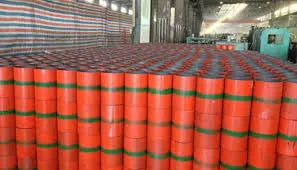- Afrikaans
- Albanian
- Amharic
- Arabic
- Armenian
- Azerbaijani
- Basque
- Belarusian
- Bengali
- Bosnian
- Bulgarian
- Catalan
- Cebuano
- Corsican
- Croatian
- Czech
- Danish
- Dutch
- English
- Esperanto
- Estonian
- Finnish
- French
- Frisian
- Galician
- Georgian
- German
- Greek
- Gujarati
- Haitian Creole
- hausa
- hawaiian
- Hebrew
- Hindi
- Miao
- Hungarian
- Icelandic
- igbo
- Indonesian
- irish
- Italian
- Japanese
- Javanese
- Kannada
- kazakh
- Khmer
- Rwandese
- Korean
- Kurdish
- Kyrgyz
- Lao
- Latin
- Latvian
- Lithuanian
- Luxembourgish
- Macedonian
- Malgashi
- Malay
- Malayalam
- Maltese
- Maori
- Marathi
- Mongolian
- Myanmar
- Nepali
- Norwegian
- Norwegian
- Occitan
- Pashto
- Persian
- Polish
- Portuguese
- Punjabi
- Romanian
- Russian
- Samoan
- Scottish Gaelic
- Serbian
- Sesotho
- Shona
- Sindhi
- Sinhala
- Slovak
- Slovenian
- Somali
- Spanish
- Sundanese
- Swahili
- Swedish
- Tagalog
- Tajik
- Tamil
- Tatar
- Telugu
- Thai
- Turkish
- Turkmen
- Ukrainian
- Urdu
- Uighur
- Uzbek
- Vietnamese
- Welsh
- Bantu
- Yiddish
- Yoruba
- Zulu
tubing and casing
Tubing and Casing Essential Components in Oil and Gas Drilling
In the oil and gas industry, the successful extraction of hydrocarbons from the earth's crust relies heavily on the proper use of tubing and casing. These components are crucial for ensuring the structural integrity of wells, protecting both the environment and the equipment, and guaranteeing the safety of the workers involved in the drilling process. Understanding the roles of tubing and casing, as well as their differences, is essential for anyone interested in the mechanics of oil and gas extraction.
What is Casing?
Casing refers to the series of steel pipes that are installed in a drilled hole to stabilize the wellbore and prevent the walls from collapsing. Casing also serves various other purposes, such as isolating high-pressure zones, protecting groundwater resources, and maintaining the integrity of the wellbore. Different types of casing are utilized throughout the drilling process, each with its specific role and function
1. Surface Casing This is the first casing installed after drilling a few hundred feet down. It provides stability to the upper part of the well and helps protect against contamination of groundwater.
2. Intermediate Casing Installed deeper than the surface casing, this type provides additional support and isolation in areas of high pressure or unstable formations.
3. Production Casing This casing runs from the final depth of the well to the surface and is critical for allowing the extraction of hydrocarbons. It is expected to withstand high pressures and temperatures, making its material and installation quality paramount.
Casing design and selection are influenced by various factors, including geological conditions, well depth, and the properties of the hydrocarbons being extracted. The casing must be adequately placed and cemented to the wellbore to prevent the migration of fluids between different geological formations.
What is Tubing?
Tubing, on the other hand, refers to the smaller diameter pipes that are inserted into the production casing after the well has been completed. It allows the flow of oil and gas from the reservoir to the surface for processing and transportation. Tubing serves several important functions
tubing and casing

1. Flow Control Tubing enables operators to control the flow rate of hydrocarbons from the well. By adjusting the diameter and length of the tubing and using various flow control devices, the production can be optimized.
2. Pressure Management Tubing systems are designed to handle the high pressures typically found in reservoirs. They must also withstand the corrosive nature of some hydrocarbons and the potential for scale buildup.
3. Maintenance and Workovers The use of tubing allows for easier maintenance and workover operations. If the tubing is damaged or needs replacement, it is easier and less costly to replace than the casing.
While both tubing and casing are critical to the functionality of a well, they differ significantly in their design, purpose, and installation. Casing is structural, providing support and isolation to protect the wellbore, while tubing is functional, facilitating the extraction of hydrocarbons and managing production.
The Role of Technology
Advancements in technology have revolutionized the way tubing and casing are designed, produced, and installed. Modern materials, such as advanced alloys and composites, provide increased strength and resistance to corrosive elements. Additionally, sophisticated software tools help engineers simulate well conditions and optimize casing and tubing designs for specific reservoirs.
Furthermore, techniques such as drilling with casing (DWC) allow for the casing to be installed as drilling progresses, reducing the risk of wellbore collapse and decreasing overall drilling costs. These innovations are crucial for enhancing the safety, efficiency, and productivity of oil and gas operations.
Conclusion
In summary, casing and tubing are vital components in the oil and gas drilling industry. Casing provides the necessary structural integrity to the wellbore, while tubing facilitates the extraction and flow of hydrocarbons to the surface. The interplay between these two elements is crucial for the safety, efficiency, and success of drilling operations. As the industry continues to evolve, ongoing advancements in materials and technology will further enhance the effectiveness of tubing and casing, ensuring that oil and gas extraction can be conducted safely and sustainably.
-
Tubing Pup Joints: Essential Components for Oil and Gas OperationsNewsJul.10,2025
-
Pup Joints: Essential Components for Reliable Drilling OperationsNewsJul.10,2025
-
Pipe Couplings: Connecting Your World EfficientlyNewsJul.10,2025
-
Mastering Oilfield Operations with Quality Tubing and CasingNewsJul.10,2025
-
High-Quality Casing Couplings for Every NeedNewsJul.10,2025
-
Boost Your Drilling Efficiency with Premium Crossover Tools & Seating NipplesNewsJul.10,2025







